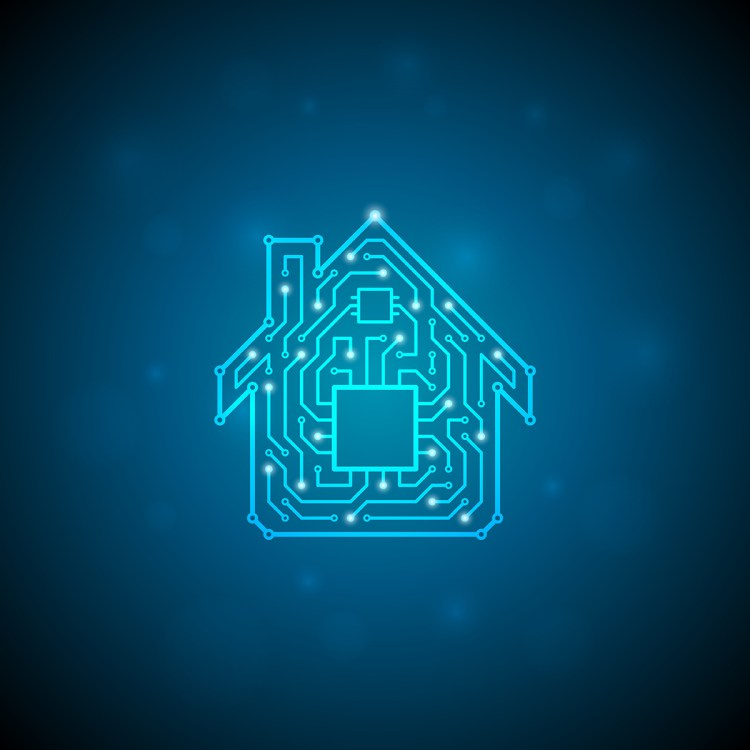Can your digital assistant really be trusted with your home’s security? Amazon and other major companies are betting big on it. Digital assistants, the core of your smart home’s interface, leverage artificial intelligence to constantly build upon your user inputs — “learning” how best to interact with you and your family. The newest crop of AI-powered home security devices use the same technology, and integration with the smart home technologies you know and love is right around the corner.
Robotic monitoring
Traditional home security systems are monitored by actual people, day and night, so there’s someone standing by when you’re asleep or away on vacation. These systems automatically contact emergency services for you, so you can rest easier knowing your home is protected. They also come with a monthly fee between $20 and $70, depending on the company. However, automated and self-monitored home security systems offer an alternative for frugal homeowners.
The newest generation of self-monitored security systems combine motion detectors, sensors, and security cameras with artificial intelligence to instantly assess a potential break-in or other emergency. By utilizing AI algorithms like voice and facial recognition, some systems (like the Flare from BuddyGuard) can even call for emergency services autonomously, eliminating the need for a monitoring service altogether. Through machine learning, these AI-powered systems are constantly improving their algorithms to help eliminate any uncertainty.
Cameras and sensors
The foundation of an AI-powered system is the security camera. Almost all self-monitoring systems feature an HD camera, and the best manufacturers couple a good camera with motion sensors to automatically begin recording when an intruder is detected. Some of the newest AI-powered devices use facial recognition software to “meet” people who visit your home and build a catalog of known individuals. This intelligent behavior makes it easier for the system to distinguish intruders from false alarms, like unexpected guests or the family dog.
June 5th: The AI Audit in NYC
Join us next week in NYC to engage with top executive leaders, delving into strategies for auditing AI models to ensure fairness, optimal performance, and ethical compliance across diverse organizations. Secure your attendance for this exclusive invite-only event.
Smart security devices offer more than a simple camera feed. With the integration of door, window, temperature, and humidity sensors, these devices can identify a broader range of security issues or simply let you know when you’ve left a window open. Many self-monitored security devices also offer audio sensors, which can send you an alert the moment a window is broken. Surprisingly, many of the most high-tech devices come equipped with good old-fashioned sirens, which can prove effective to deter criminals and alert neighbors.
Sensors attached to doors and windows in your home can tell you if something’s been opened when you’re away. The data from these sensors can also be invaluable to remind you to close up everything before leaving for your vacation. Some systems, like those offered by Canary, even offer sensors that can alert you to unexpected changes in temperature and humidity. If the boiler decides to give up the ghost while you’re away, you can call for maintenance before the pipes freeze.
Smart home integration
Nearly all self-monitored home security systems integrate with the rest of your smart home’s technology. Light systems can connect with your security system, turning on your lights in the event of a break-in. There are even smart door locks that allow locking and unlocking straight from your cell phone.
Digital assistants like the Amazon Alexa or Google Assistant are also compatible with many self-monitored security systems. Scout, Abode, and SmartThings all integrate automatically with Amazon’s Echo and Echo Dot for truly automated home security. These assistants aren’t fully compatible with AI-powered devices like those from Lighthouse or BuddyGuard yet, but with digital assistants dominating the smart home market, integration could develop quickly.
The rest of your smart home’s tech can often be leveraged to enhance your security, convenience, and comfort. You can connect your smart hub to sprinkler systems and appliances to control them from anywhere. And many of the current-generation automated light fixtures can learn your routine over time (keeping unneeded lights off to save money) and mimic your lighting habits when you’re away to make it appear like someone’s home.
The future of AI-powered security
The use of data-driven machine learning is nothing new in smart homes. Digital assistants like Alexa and Google Home have been leveraging the data collected through their microphones for the development of AI technology for years.
With the introduction of AI-powered home security devices, new questions arise about privacy and security. The future for AI tech remains to be seen, but better integration with other smart home technologies, more accurate face and voice recognition, and the legal ramifications of a robot that calls the police loom on the horizon.
Krystal Rogers-Nelson is a freelance writer and security expert who specializes in tech, cybersecurity, and family safety.


